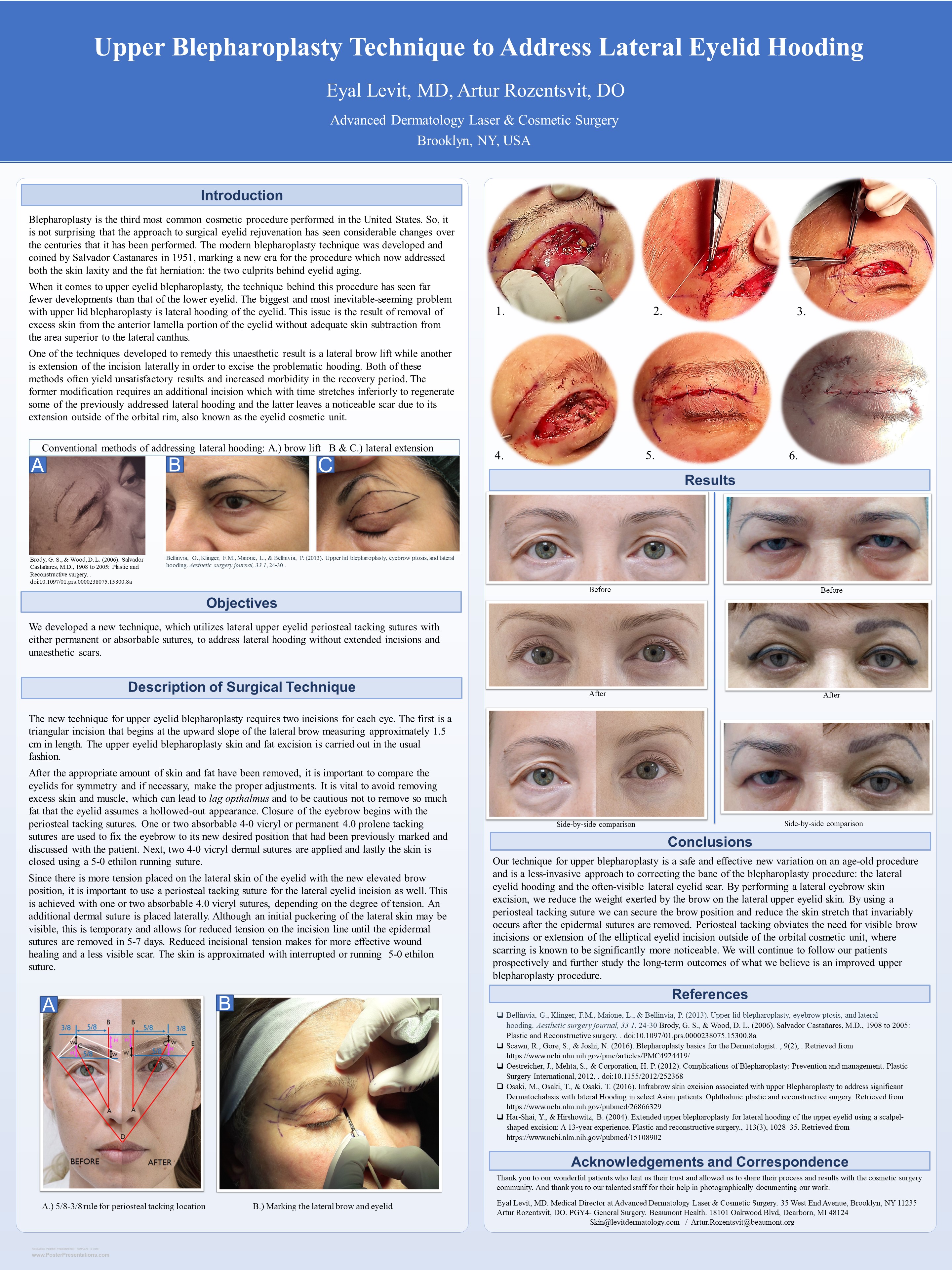
Speaker
 Artur Rozentsvit, DO
Artur Rozentsvit, DO
Beaumont Hospital, General Surgery Residency, Trenton & Dearborn, Allen Park, MI
Undergrad: Binghamton University Medical School: NYIT-COM Residency: Beaumont Health General Surgery resident at Beaumont Hospitals in Michigan. Interests include abdominoplasty, body-contouring, blepharoplasty. I am passionate about discovering and implementing new, less invasive techniques to achieve satisfactory results. I am always learning about different ways to do things and accomplish patient satisfaction.
Abstract
Introduction: Blepharoplasty is the third most common cosmetic procedure performed in the United States. Therefore, it is not surprising that the approach to surgical eyelid rejuvenation has seen considerable changes over the centuries that it has been performed. The modern blepharoplasty technique was developed and coined by Salvador Castanares in 1951, marking a new era for the procedure which now addressed both the skin laxity and the fat herniation: the two culprits behind eyelid aging.
The most dreadful and inevitable-seeming problem with upper lid blepharoplasty is lateral hooding of the eyelid. To remedy this technical dilemma, we developed a new technique, which utilizes lateral upper eyelid periosteal tacking sutures with either permanent or absorbable sutures. In such, we were able to address lateral hooding without ancillary incisions and unaesthetic scars.
Methods: We compared the results of our new technique for upper lid blepharoplasty with those of conventional techniques by conducting a five-year retrospective review of two surgeon’s case series. We compared the results using patient-completed satisfaction surveys, in-person clinical assessments, and photographs taken pre- and post-operatively.
Results: Patients who received upper lid blepharoplasty with a minimal lateral brow skin excision and periosteal tacking suture reported greater satisfaction with the appearance of their surgical scar and had an obvious and significant reduction in lateral eyelid hooding as compared to those in the conventional surgery group.
Conclusion: This new technique for blepharoplasty is a safe and effective new variation on an old method developed to combat the bane of the blepharoplasty procedure: the lateral eyelid hooding and the often-visible lateral eyelid blepharoplasty scar.
Take Home Message
Blepharoplasty is the third most common cosmetic procedure performed in the United States. Therefore, it is not surprising that the approach to surgical eyelid rejuvenation has seen considerable changes over the centuries that it has been performed. The authors for this abstract developed a new technique, which utilizes lateral upper eyelid periosteal tacking sutures with either permanent or absorbable sutures. As a result, they we were able to address lateral hooding without ancillary incisions and unaesthetic scars. This new technique for blepharoplasty is a safe and effective new variation on an old method developed to combat the bane of the blepharoplasty procedure: the lateral eyelid hooding and the often-visible lateral eyelid blepharoplasty scar.
